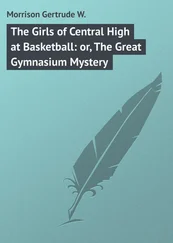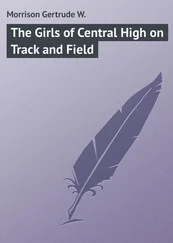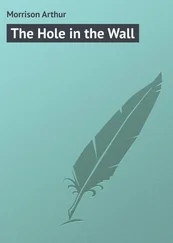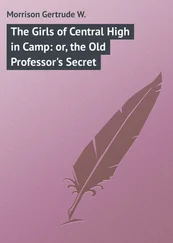“I’m just saying that we need more evidence,” Reggie said defensively. “I mean, sure, if we had a 9.0 earthquake on our hands, I’d issue the warning in a second. But to completely wipe out Christmas Island and our tide gauge, the tsunami would have to be huge—at least twenty feet high. There’s no way a 6.9 quake causes a tsunami that big.”
“Are you sure?”
“I’ve researched every major tsunami in the last sixty years,” Reggie said. “There is absolutely no historic precedent for it. Besides, do you realize how much an evacuation costs? We’ll be crucified if we’re wrong, especially with this kind of flimsy data. I say we wait twenty minutes. If the tide gauge on Johnston craps out, too, then I’m all for a warning.”
Twenty more minutes. For a massive evacuation, every minute would count. With less than an hour before a potential tsunami hit the southern tip of the Big Island, Kai had to make the call. In his mind he imagined the headlines vilifying him for a massive unnecessary evacuation. The internal NOAA investigations into why he ignored long-established procedures. The political reprisals condemning yet another federal employee who couldn’t handle the position. As Kai thought about it, the retaliatory consequences became clear to him. His tenure would be cut short by what would be seen as a lack of judgment, that he didn’t have the experience for the job.
On the other hand, something deep down was telling him that this wasn’t just a power disruption. He couldn’t pinpoint where the cognitive dissonance was coming from, the subtle clash of information that was telling his subconscious mind it didn’t fit together. Logically, there was little reason to be worried about a major tsunami. But they couldn’t rule it out, either, and that’s what scared him the most.
In the end, Kai’s choice simply came down to what was best for his family. His daughter was on the beach that morning. His wife was in a hotel no more than a hundred yards from the ocean. He could live with losing his job because he made a poor decision; he couldn’t live with himself if his wife and daughter died because he made a poor decision.
“We’ve already waited thirty minutes,” Kai said softly. “We can’t wait any longer.” His doubt made him sound unconvincing. When Kai realized Reggie and Brad were looking at him, hoping to see confidence, he cleared his throat and stood up straighter. “Reggie, send out the warning. I’ll get on the phone and talk to the duty officer over at Hawaii State Civil Defense.” Like the PTWC, HSCD would be minimally staffed on a holiday.
“Are you sure?” Reggie said. “We’ve got even less to go on than the one we issued last year.”
A mixture of concern and support etched Brad’s face. Even as a bystander, he knew this was a tough call.
But Kai’s moment of hesitation was over. He couldn’t let his misgivings influence others, diminishing the sense of urgency about the evacuation. If a real tsunami was coming, they needed to act quickly and decisively.
“I’m sure. Do it. Issue the warning.”
“Okay,” Reggie said. “I’m glad it’s your call. I wouldn’t want to be in your shoes.”
Reggie went to the computer and started typing in the commands that would issue a tsunami warning to every government agency in the Pacific. Kai had just made a $50 million decision.
10:01 a.m .
1 Hour and 21 Minutes to Wave Arrival Time
Kai called Hawaii State Civil Defense and the officer on duty, a junior staffer named Brian Renfro, answered the phone immediately. “Brian, this is Kai Tanaka over at PTWC. I need to speak to Jim Dennis.” Dennis, the vice director of HSCD, was the person who normally made the big decisions there and coordinated all the efforts of the state’s emergency services.
“Sorry, Kai, he took the weekend to visit some friends on Kauai. It’s just me and a couple of others here today. What’s wrong?”
On a normal working day, HSCD would have up to thirty people on staff. He knew Renfro from the first semiannual training scenario he had participated in. Renfro was a bright kid, but young, not much older than twenty-five. Kai could only hope that Renfro’s thorough training at HSCD would prepare him for what was about to happen. He was about to get a big dose of responsibility.
At least Renfro was in a safer location than Kai. Rather than being built three hundred yards from the ocean like the PTWC was, HSCD was well ensconced in a bunker inside Diamond Head crater. Because Hawaii was exposed to so many different types of potential disasters—tsunamis, hurricanes, volcanoes, earthquakes—the state took civil defense very seriously. Situated inside an extinct volcano with sides over six hundred feet high, the bunker could withstand virtually any disaster nature could dish out.
“Brian,” Kai said, “we’ve got a situation here. Did you see the bulletin we sent out earlier?”
“Sure did. What’s the problem? Are you upgrading it?”
“Yes. We’ve lost contact with Christmas Island.”
“You mean the tide gauge?”
“No, I mean the whole island, including the tide gauge.”
“When?”
“The tide gauge was supposed to give us a reading over thirty minutes ago. Since then, we haven’t been able to get in touch with anyone on the island.” Kai took a deep breath. “We think it may have been wiped out by a tsunami.”
There was a pause at the other end of the line.
“Okay,” Renfro finally said. “Give me one minute. Then I’ll call you back. I’m going to try to get in touch with the vice director.”
Kai hung up the phone and told Brad and Reggie what Renfro said.
“What do we do now?” Brad said.
Reggie perked up as if he just remembered something. “My God!”
“What?” Kai said.
“There’s a team of scientists on Johnston Island.”
“But I thought it was abandoned,” said Brad. “There was an article in the paper about the chemical weapons disposal facility being shut down in 2004. Now it’s a nature sanctuary or something.”
Johnston Island, a tiny coral atoll like Christmas Island, was only about twice the size of Central Park. Until 2001, it served as the United States’ primary disposal facility for chemical weapons, but fortunately it had incinerated its last bomb. If this tsunami had happened before then, they might have faced the additional specter of having thousands of canisters of the deadliest chemicals known to man washed out to sea. That was one of the few things Kai felt relieved about at that moment.
The other good news was that, now that the facility was shut down, the thirteen hundred people who manned the station had packed up for good, with the last of them having left in 2004. Since then, it had been operated by the U.S. Fish and Wildlife Service as a wildlife preserve.
“How do you know someone’s there?” Kai said, snatching the map of Johnston Island from its bin and unfurling it on a table.
“I wanted someone to check the tide gauge there because we’ve been having intermittent signal problems,” Reggie said. “Alvin Peters over at U.S. Fish and Wildlife said a team was there for a month doing observational studies of turtle nesting on the island and that they could check on the equipment for me. Even gave me their sat phone number.”
A quick scan of the map showed that the maximum elevation on the island was no more than forty-four feet, not high enough to ensure protection from a large tsunami. Kai didn’t know the state of the buildings there or whether they would be able to stand up to the force of a tsunami. The only truly safe place was out at sea in deep water. Thank God the scientists on the island had a phone.
Читать дальше












